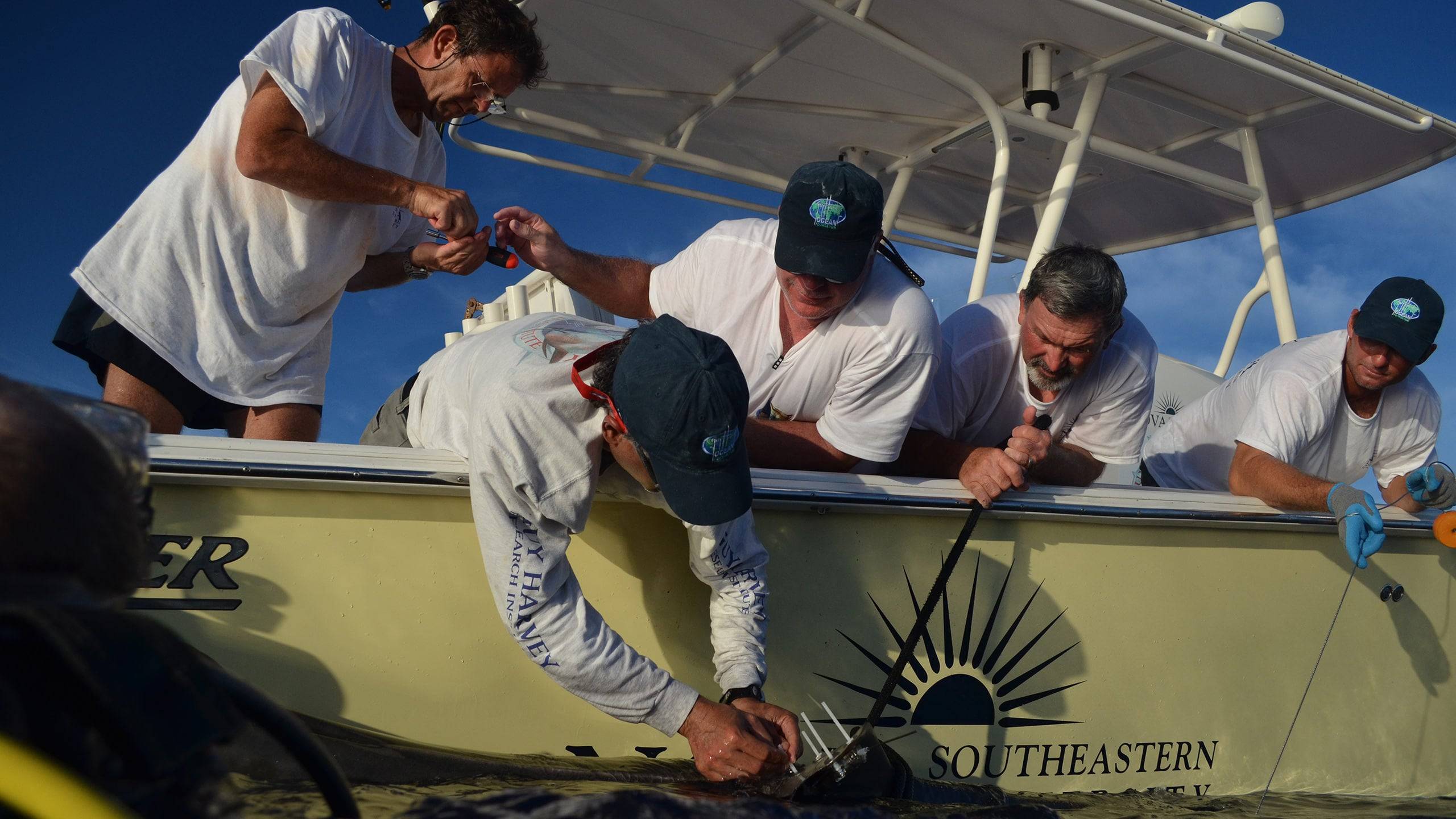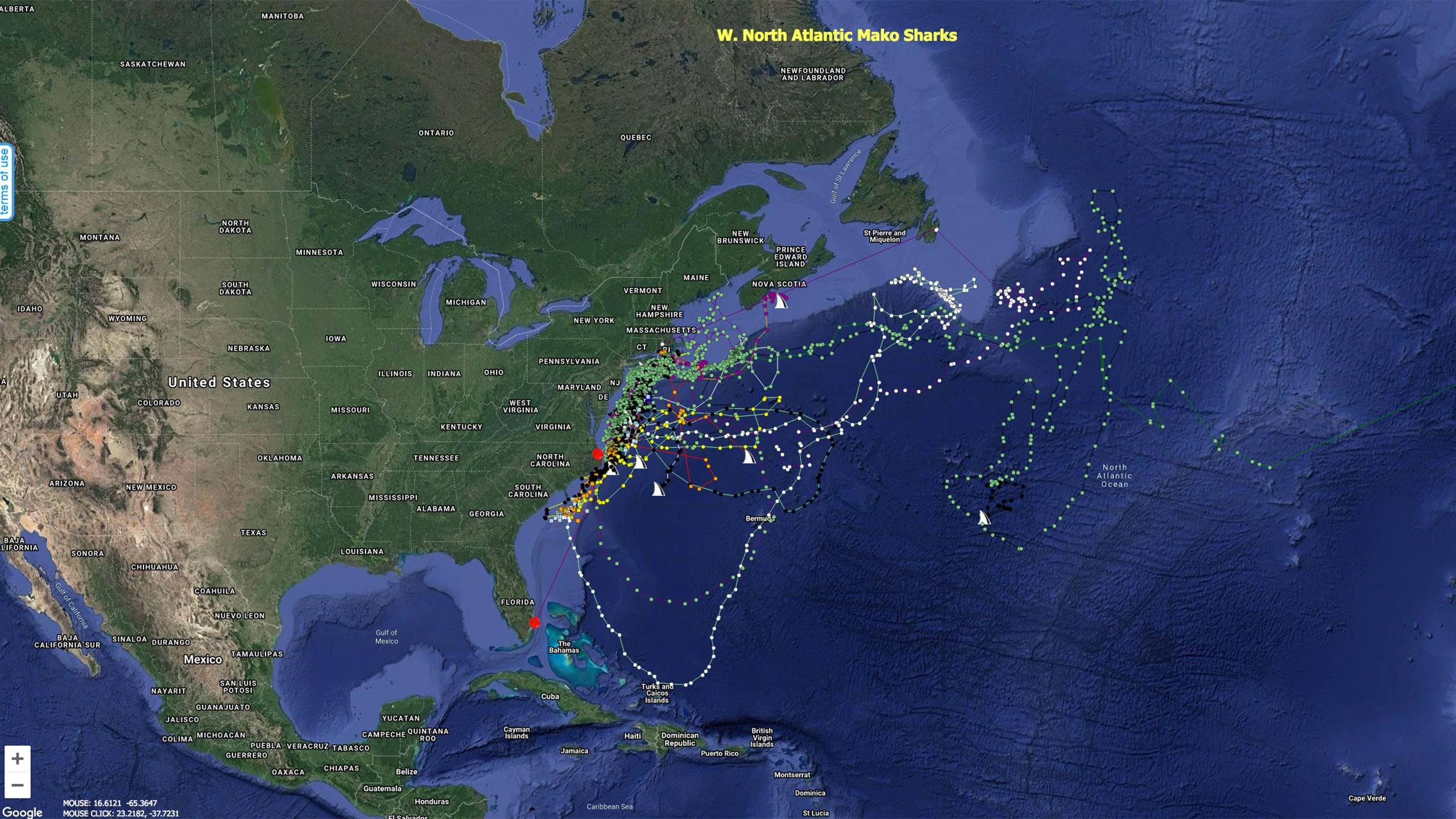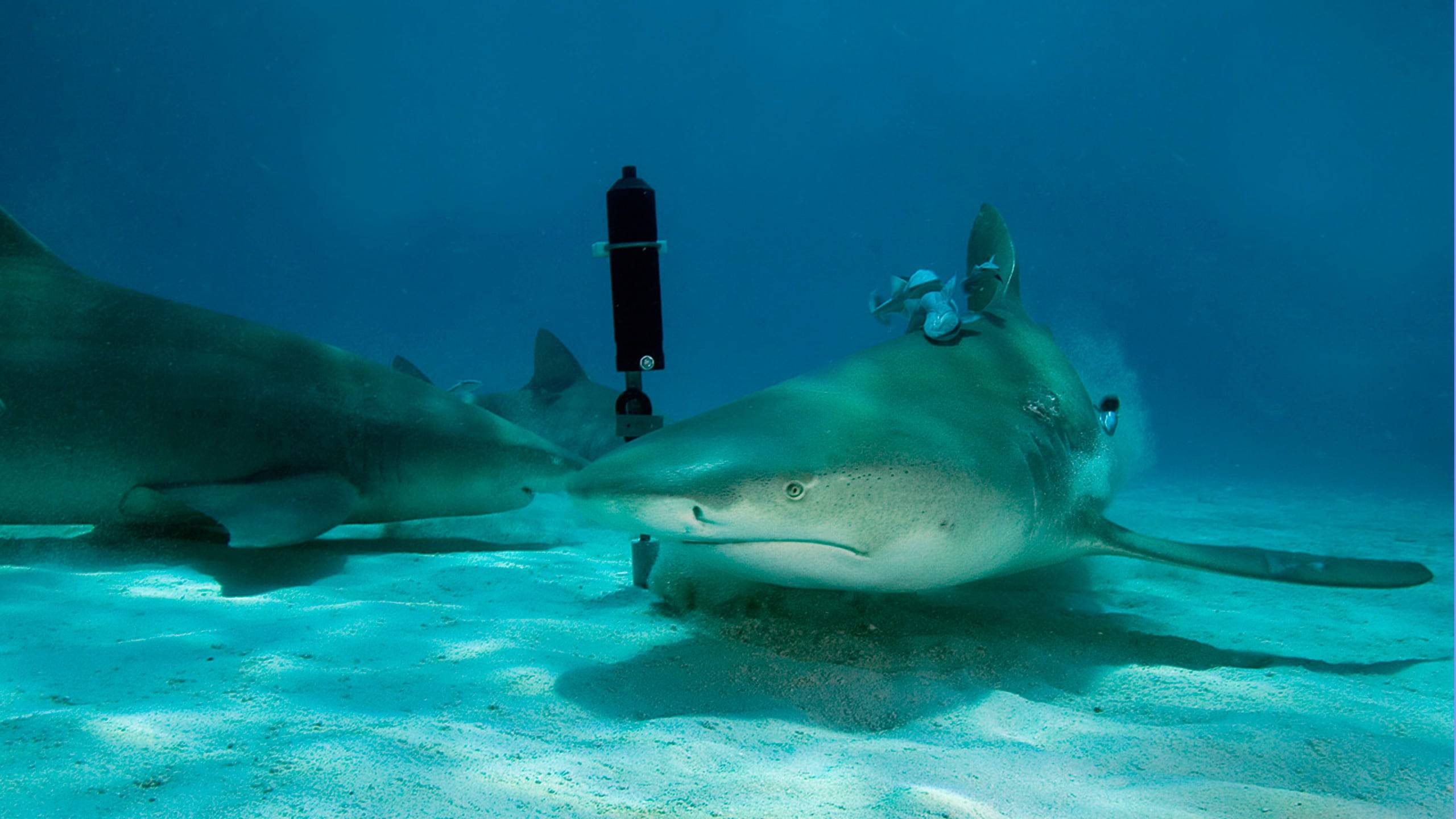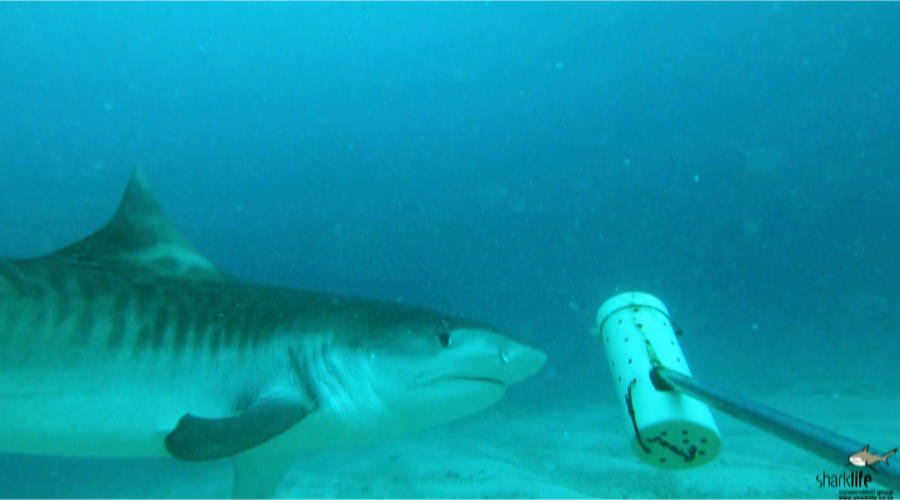Although there is a general consensus that sharks and rays are more active at night, our knowledge on their diel ecology and behaviour remains drastically limited. Using BRUVs, the diel behavior of shark and ray species in an MPA in South Africa will be analyzed.
Lady Tiger Shark very interested in BRUV bait
Photo © Sharklife ZA
Background
The marine protected area (MPA) of iSimangaliso Wetland Park, Sodwana Bay, South Africa, is a large protected area with several species of sharks and rays. It is ideal to study the natural diel behavior of these species and the influence of ecotourism on it. There are heavily frequented areas as well as an area close to the Mozambique border that is almost pristine due to its remoteness. By analyzing animals in both regions, differences in diel behavior should be detectable.
The diel activities as well as species composition will be monitored using baited remote underwater video (BRUV). Similar to BRUVs but only qualitatively, environmental DNA (eDNA) is used to detect the presence (or less possibly absence) of species in a given area. Special eDNA analyses will be developed to check for species that might not, for whatever reasons, be detected using BRUVs and vice versa.
Objectives
Using BRUVs, the project team will monitor the diel activities in three regions of the iSimangaliso WPA, the southern region the central region with diving activities and the pristine northern region. The team can also use monitoring data collected in these areas over the last 10 years. BRUVs normally work best during day time with good lighting conditions. To monitor the sharks and rays at night, a BRUV system will be developed that can be deployed during the day but that will record only at a given time during the night.
eDNA is often used as a monitoring tool similar to BRUVs. To compare the efficiency of BRUVs and eDNA, the team plans, in close collaboration with Prof S. Mariani from the Liverpool John Moores University, a leading expert in elasmobranch eDNA, to develop a new cheap and easy to use eDNA sampling method, e.g. without costly filter systems. This low-budget eDNA procedure could then also be made available to NGOs with limited resources.
Project Status
The data collection has started in 2023.
Administrative Details
Project Status: in progress since 2023
Project leader: Steve Gerber, Nelson Mandela University, South Africa
Funding since 2023: approx. CHF 6,000







